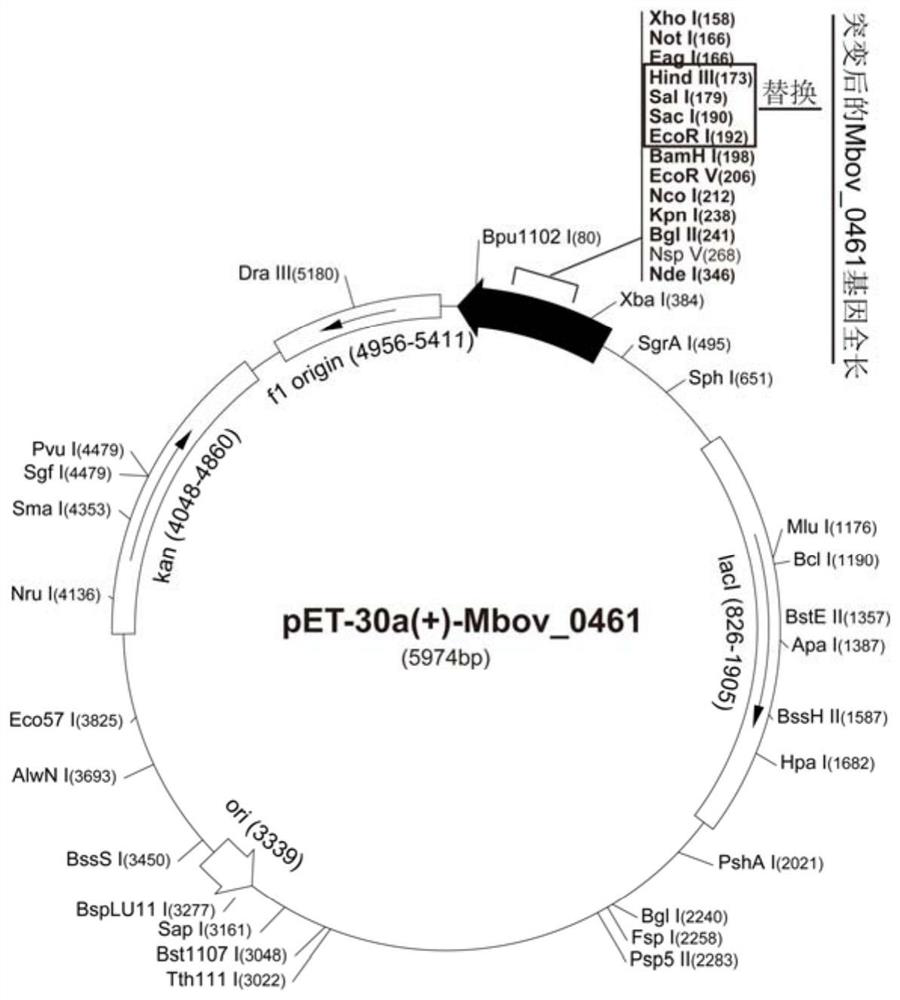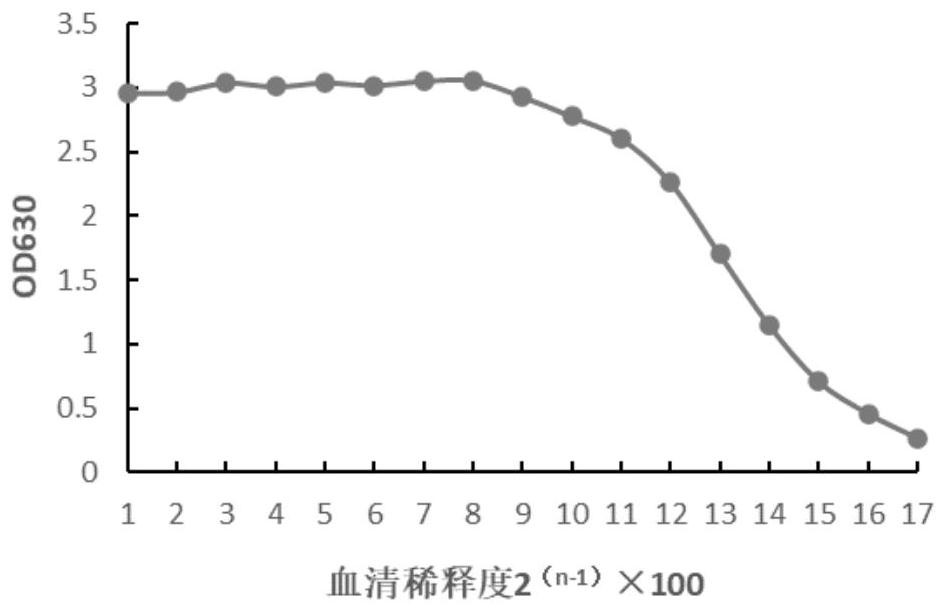Mycoplasma bovis P21 protein and application thereof
A technology of Mycoplasma bovis and protein, which is applied in the field of animal infectious disease prevention and biology, can solve problems such as reducing virulence, and achieve the effects of reducing pathogenicity and reducing adhesion
- Summary
- Abstract
- Description
- Claims
- Application Information
AI Technical Summary
Problems solved by technology
Method used
Image
Examples
Embodiment 1
[0033]Example 1: Expression and purification of M.bovis P21 protein
[0034] 1.1 M.bovis Mbov_0461 gene clone
[0035] Because E. coli is to codon preference, the codon UGA of tryptophan in M.bovis Mbov_0461 gene in the present invention is used as terminator in E. coli, therefore, when expressing M.bovis gene with E. coli, need The mycoplasma Mbov_0461 gene was mutated, and the codon UGA was mutated to the codon UGG which can express tryptophan in Escherichia coli. The specific steps are: use the M.bovis HB0801 genome as a template, design 2 pairs of primers (numbers: 0461a1 / 0461a2, 0461b1 / 0461b2) according to the Mbov_0461 gene sequence, and add restriction enzymes to the 5′ ends of the 0461a1 and / 0461b2 primers respectively sites and protective bases to amplify two fragments of the mutated Mbov_0461 gene respectively, and then use the two mutated fragments as templates to amplify using the 0461a1 / 0461b2 primer pair to obtain the mutated Mbov_0461 gene The full-length seq...
Embodiment 2
[0050] Example 2: Preparation of polyclonal antibody against rP21 protein
[0051] Immunize the purified rP21 protein to male Japanese white rabbits, the immunization amount is about 1 mg / rat, calculate the volume of the rP21 protein used according to the immunization amount, mix it with an equal volume of Freund’s complete adjuvant to emulsify completely, and inject it subcutaneously at multiple points for immunization After that, immunize once every two weeks. From the second immunization, Freund's incomplete adjuvant was used for emulsification, and blood was collected from the ear vein one week after the third immunization, and the antibody level was detected by indirect ELISA method. Generally, 3- The desired titer can be reached after 4 times, and when the antibody level no longer increases, heart blood can be collected to purify the polyclonal antibody. The results showed that the titer of polyclonal antibody produced by rP21 protein was 1:2 16 ×100, that is, 1:6.5×10 ...
Embodiment 3
[0052] Example 3: Reactogenicity analysis of rP21 protein
[0053] The ELISA method is used for detection, and the main steps are as follows: the rP21 protein is coated on a 96-well ELISA plate at 100 ng / well, and left overnight at 4°C. After washing and blocking, incubate the protein with M.bovis positive bovine serum at 37°C for 45min, then incubate with goat anti-bovine IgG-HRP (1:4000) antibody at 37°C for 30min; healthy bovine serum is used as a negative control; Finally, the reactant was developed with 3,3,5,5-tetramethylbenzidine (TMB) solution for 10 min, and the reaction was terminated with hydrofluoric acid; the absorbance was detected at 630 nm with a microplate reader. The results showed that rP21 protein could react with M.bovis positive bovine serum, and the absorbance value at OD630 nm was significantly higher than that of rP21 protein reacting with healthy bovine serum ( Figure 4 ), indicating that the rP21 protein has good reactogenicity.
PUM
 Login to View More
Login to View More Abstract
Description
Claims
Application Information
 Login to View More
Login to View More - R&D Engineer
- R&D Manager
- IP Professional
- Industry Leading Data Capabilities
- Powerful AI technology
- Patent DNA Extraction
Browse by: Latest US Patents, China's latest patents, Technical Efficacy Thesaurus, Application Domain, Technology Topic, Popular Technical Reports.
© 2024 PatSnap. All rights reserved.Legal|Privacy policy|Modern Slavery Act Transparency Statement|Sitemap|About US| Contact US: help@patsnap.com










